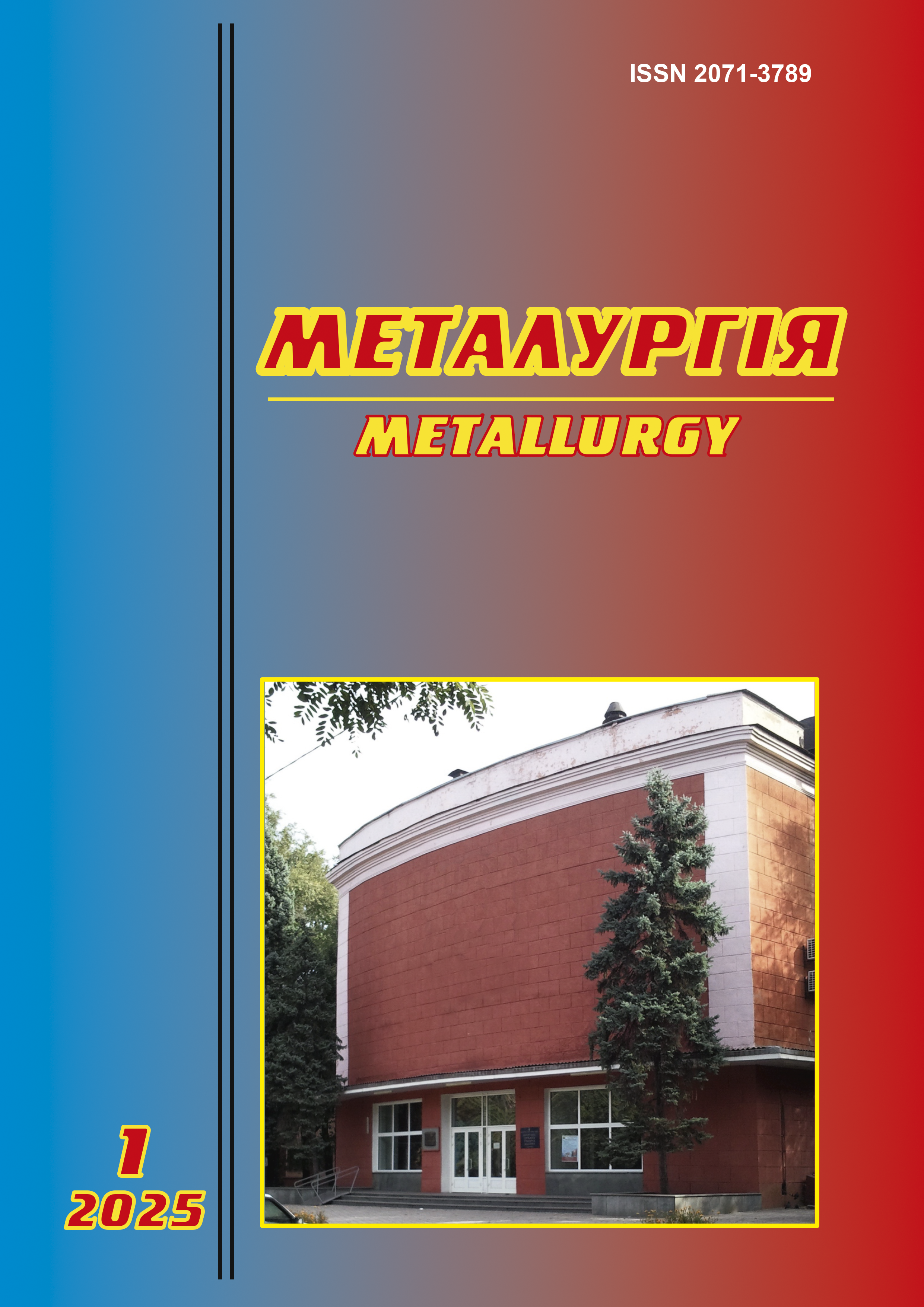TITANIUM HYDRIDE AS ONE OF THE MAIN PRODUCTS IN THE PRODUCTION OF TITANIUM POWDERS
Abstract
Titanium and titanium powders are attractive for a wide range of structural and functional applications due to their excellent specific strength, toughness, stiffness, and corrosion resistance. When exposed to hydrogen, titanium forms hydrides in the form of TiHx, leading to cracking and mechanical failure as a result of lattice distortion and stress accumulation. The kinetics of the hydriding process depends on several factors, including the critical threshold of hydrogen saturation within Ti, the nature of hydrogen’s interaction with the protective surface oxide, mass transfer rate, and the kinetics of nucleation and phase transformations.The high production cost associated with existing manufacturing technologies prevents widespread use of titanium in civilian industries such as automotive manufacturing, consumer goods production, and others. Particularly with the active development of additive manufacturing, an urgent task is to develop methods for obtaining metal powders with low production costs that still meet high consumer requirements.An alternative to reducing production costs for obtaining metallic titanium lies in the methods inherent to powder metallurgy. The technological properties of titanium powders– such as their suitability for shaping and sintering by powder metallurgy methods–enable their use across various industries, including machine tool building, construction, aerospace engine manufacturing, and precision instrumentation.Ion implantation is often used to modify the chemical, mechanical, or electrical properties of materials. This method was applied for implanting H ions into a Ti matrix to study hydride behavior.The main problem of ion implantation is radiation damage transferred to the matrix due to the need to accelerate the implanted ions for penetration. During this process, accelerated ions transfer their kinetic energy and momentum to the electrons and nuclei of the target atoms, generating a significant number of defects, such as atomic vacancies or interstitial ions. In ion implantation, the primary defects are located near the material’s surface and are retained in these defect sites.
References
2. Yanko T., Brener V., Ovchinnikov O. Production of spherical titanium alloy powders used in additive manufacturing from titanium scrap. In: MATEC Web of Conferences (The 14th World Conference on Titanium (Ti 2019), Nantes, France, 10-14 June 2019). 2020;321(07008). https://doi.org/10.1051/matecconf/202032107008
3. Fang Z.Z., Paramore J.D., Sun, P., Ravi Chandran K.S., Zhang Y., Xia Y., Cao F., Koopman M., Free M. Powder metallurgy of titanium – past, present, and future. International Materials Reviews, 2017. Vol. 63(7). P. 1-53/
4. Y. Liu, Z. Ren, J. Liu, R. Schaller, E. Asselin, Electrochemical Investigation and Identification of Titanium Hydrides Formed in Mixed Chloride Sulfuric Acid Solution, J. Electrochem. Soc. 166 (11) (2019) C3096.
5. M. Vezvaie, J. No¨el, Z. Tun, D. Shoesmith, Hydrogen absorption into titanium under cathodic polarization: an in-situ neutron reflectometry and EIS study, J. Electrochem. Soc. 160 (9) (2013) C414.
6. Zhu, Y.; Heo, T.W.; Rodriguez, J.N.; Weber, P.K.; Shi, R.; Baer, B.J. et al – Hydriding of titanium: Recent trends and perspectives in advanced characterization and multiscale modeling – Article in Current Opinion in Solid State and Materials Science July 2022 DOI: 10.1016/j.cossms.2022.101020; https://www.researchgate.net/publication/362966545
7. N. Pushilina, M. Syrtanov, E. Kashkarov, T. Murashkina, V. Kudiiarov, R. Laptev, A. Lider, A. Koptyug, Influence of manufacturing parameters on microstructure and hydrogen sorption behavior of electron beam melted titanium Ti-6Al-4V alloy, Materials 11 (5) (2018) 763. [61] N. Pushilina, A. Panin, M. Syrtanov, E. Kashkarov, V. Kudiiarov, O. Perevalova, R. Laptev, A. Lider, A. Koptyug, Hydrogen-induced phase transformation and microstructure evolution for Ti-6Al-4V parts produced by electron beam melting, Metals 8 (5) (2018) 301.
8. T. Suda, M. Ohkawa, S. Sawada, S. Watanabe, S. Ohnuki, S. Nagata, Effect of surface modification by ion implantation on hydrogenation property of TiFe alloy, Mater. Trans. 43 (11) (2002) 2703–2705.
9. Q. Wang, S. Xu, J.-S. Lecomte, C. Schuman, L. Peltier, X. Shen, W. Song, Crystallographic orientation dependence of hydride precipitation in commercial pure titanium, Acta Mater. 183 (2020) 329–339.

 ISSN
ISSN 


